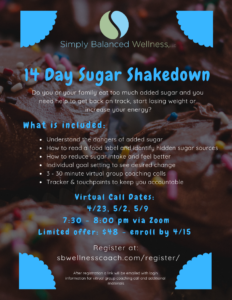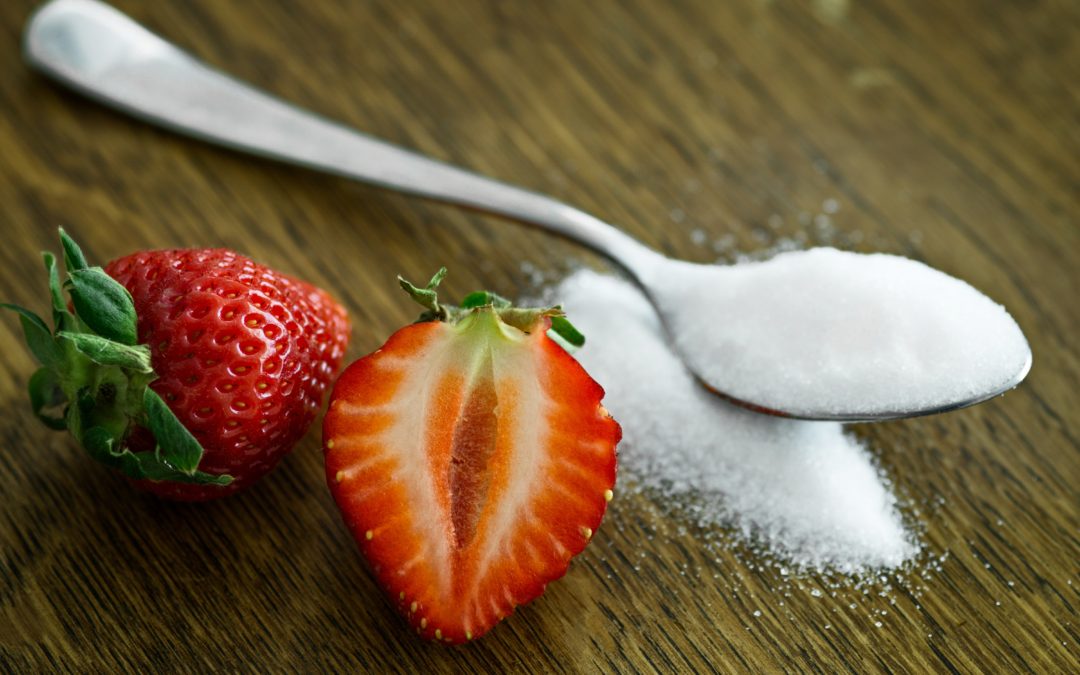So I have confession, I have been eating way to much sugar lately and I’m not talking about 15 apples! Is this a problem for anyone else? I know that eating a lot of sugar isn’t good for me, but between valentine’s day, spring break travels and just having those cravings where chocolate is calling my name I can’t help myself. Although I try to watch what I eat and refrain from added sugar as much as I can, I like anyone struggles from time to time. It got me thinking that even when we reduce the obvious sources of sugar (chocolate, candies, soda) there are still many other sources of hidden sugar in a lot of the foods we may eat. According to The University of California San Francisco, added sugar is hiding in 74% of packaged foods. This includes items like, whole grain breads, low fat items, coffee creamers, yogurt, peanut butter and the list goes on. Even items that are labeled “healthy” or “natural” can still have added sugar.
According to, Heidi Turner, M.S., R.D.N at The Seattle Arthritis Center, the average American consumes 94 grams of added sugar per day. The American Heart Association recommends no more than 38 grams per day for men should come from sugar, 25 grams per day for women and recommendations for children vary between 12-25 grams depending on age and caloric needs. The take home, we are consuming way more sugar than our body needs or can use.
So why do eat so much sugar and why has it become a staple in many of our health foods? Our brains use glucose, a form of sugar, as a primary energy source. Brain functioning such as thinking, learning and memory are closely linked to glucose levels; therefore, our brain cannot be without it. In addition to the brain needing glucose to function, eating sugar also causes our brain to release dopamine, causing us to perceive sugar as very rewarding. Dopamine is the same chemical released that causes drug addicts and alcoholics to seek a high and has been shown that sugar can have some addictive potentials as well. USC did a study that gave participants the option of consuming a tasty food right after a meal or having money sent to them a month later. When participants consumed a food containing fructose (not naturally occurring) they had a greater willingness to give up the money to obtain the tasty treat. When sugar is combined with fat, (as it often is) that reward response is even more potent. Food manufactures use varying types of sugar sources to enhance flavor or sweeten a product especially when there is reduced fat. There are at least 61 different names for sugar listed on food labels in the ingredient list leaving many consumers who are trying to make healthy choices confused and overwhelmed.

Currently food labels list the amount of total sugar, but manufacturers have not been required to say whether that total includes added sugar. This can be tricky to understand what amount of sugar may be naturally occurring in a product vs sugar that is added. Changes are on the way; however, and after 20 years of using the same food label, the FDA has announced food labels are getting a face lift. Packaged foods will now be required to reflect new scientific info and will show an updated format. One of the most important changes is that the amount of added sugar will be displayed. Some prepackaged foods are already complying and including the new label on their products ahead of the required change. Manufacturers that have more than 10 million in sales must switch to the new label by January, 1 2020. Companies with less than 10 million in sales have until January 1, 2021 to comply.
Sometimes I just want some M&M’s or that ice cream cone (my mouth is watering right now) and ya know what I am not going to feel guilty about that, but we have all been there. You have a vanilla latte with a friend, there is a birthday treat at work, you go out to dinner and order a margarita not to mention any other item you ate that had added sugar all in one day. This goes on for a few days…..how do you feel? If you are like me, you feel sluggish and maybe a little thicker around the middle but once you get back to your normal way of eating you lose those few extra pounds and get back to feeling healthier. What if eating that way is your normal? Maybe you have a flavored latte daily, a couple energy or sports drinks, you drink sweet alcoholic beverages and prepacked food regularly. Your body might not even know that it can feel different. That you can have consistent energy, better cognitive function and increased memory because when you try to cut back on sugar all you get are headaches and cravings.
Long term excess sugar consumption has been linked to increased levels of LDL cholesterol, (the bad one) increased plaque deposits in the arteries, diabetes, obesity, inflammation in the body, depression, and breast and colon cancers. According to USC, added sugar also ages skin, numbs our “overeating” sensor and reduces our memory and ability to learn. Even sugar sources that have been deemed “healthy” can be an issue if consumed in large amounts on a regular basis. Although sources like honey and maple syrup may be metabolized better and a better choice than say high fructose corn syrup they are all added sugar and should be limited.
Wait a minute aren’t all sugars bad? Remember how I said that the brain needs glucose to function? Our bodies turn most of the foods we eat into sugar. Good sugar, like glucose comes from carbohydrates we eat and fuel cells throughout our body, including our brain. The second type of sugar is fructose and when eaten in the form of fruits and vegetables the body gets the benefit of nutrients, fiber, vitamins, minerals and phytonutrients. All of these help feed the healthy bacteria in our gut and help metabolize the sugar found in fruit. This helps our body to be satiated for a longer period without a massive blood sugar spike. When you eat fructose in food items that are not naturally occurring the body isn’t getting the benefits from the vitamins and other things found in fruits and veggies.
Ok, so you are feeling motivated to make a change in how much sugar you consume. How can you decrease the amount of added sugar in your day? To start with watch portion sizes, read food labels to look for hidden sugar sources in the ingredient section and check out a few alternatives that are lower in sugar.
Drinks
– Drink water, herbal or fruit teas, black coffee or fizzy waters with natural flavoring (not sugar or sugar substitutes)
Dessert
– Fresh Fruit, Dark chocolate, handful of dates, baked fruits with cinnamon and a little cream
Sauces – limit
– many sauces are laden with sugar, these include: ketchup, BBQ sauce, dressings, sweet chili sauce. Instead replace with mustard, vinegar, pesto, herbs and spices.
Challenge: Look at your typical daily food intake. A 3 day food diary documenting approximate food amounts and what you ate can give you a snapshot of what you may be eating like on a bigger scale. What are two changes you can make to help reduce you and your family’s sugar intake. Can you cut back on coffee creamer, only order a flavored latte once a week, cut back on soda, only use oil and vinegar for a salad dressing? Write your goal down and stick it on the fridge. Don’t go cold turkey if you want the change to last, start slowly and over time you will start to seeing lasting changes.


Recent Comments